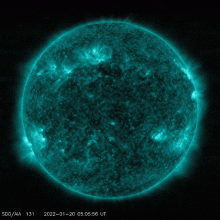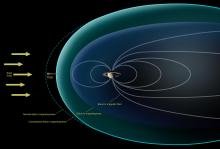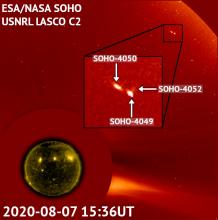Listen to today's episode of StarDate on the web the same day it airs in high-quality streaming audio without any extra ads or announcements. Choose a $8 one-month pass, or listen every day for a year for just $30.
You are here
Solar Minimum
The Sun has been drowsy of late. Last year, it posted the equivalent of nine months without the dark magnetic storms known as sunspots. That’s the fourth-highest number in the last 170 years. This year began in similar fashion. And scientists expect the quiet times to continue.
The Sun goes through an 11-year cycle of magnetic activity. At the cycle’s peak, scores of spots mar the Sun’s surface. And big explosions send radiation and particles racing through the solar system. When they reach Earth, these outbursts create intense displays of the northern lights. They also can damage satellites, disrupt some radio communications, and cause power outages on the surface. But at the cycle’s low point, called solar minimum, the Sun produces fewer outbursts.
The current cycle began in 2008 and peaked in 2014. It was the quietest peak in decades. And the cycle has been especially quiet over the last couple of years. It produced no sunspots at all from November 14th through December 23rd — the longest spot-free span since 1996.
And forecasters predict the cycle will reach its minimum this month.
Some of the few sunspots that did appear late last year had an opposite magnetic polarity from those of the dying cycle. That suggests that the next cycle may be starting. Forecasters say the new cycle should peak in July 2025, at about the same level as the current one. So the Sun might stay drowsy for years to come.
Script by Damond Benningfield





